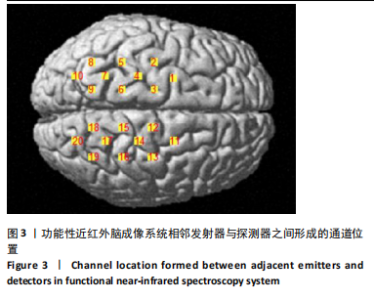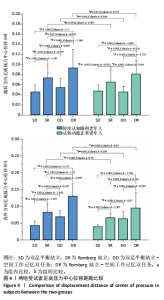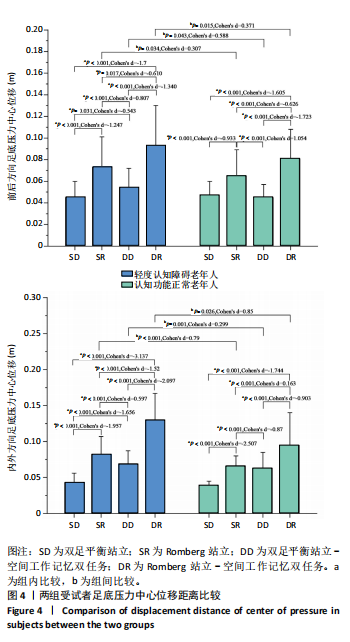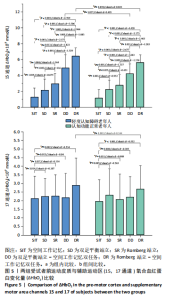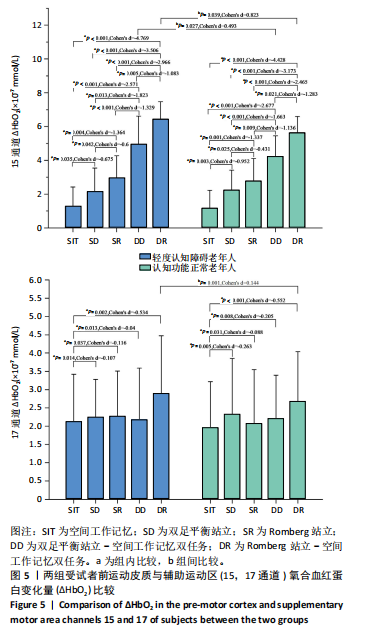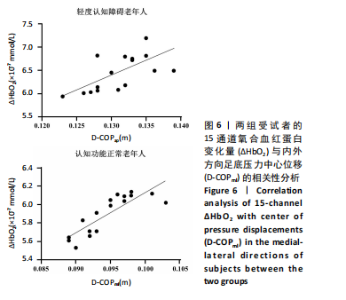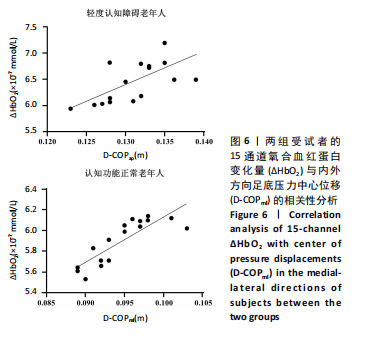[1] 郭程程, 王月枫, 候林林, 等. 轻度认知功能障碍病人体力活动研究进展[J]. 护理研究,2021,35(19):3458-3461.
[2] JONGSIRIYANYONG S, LIMPAWATTANA P. Mild cognitive impairment in clinical practice: a review article. Am J Alzheimers Dis Other Demen. 2018;33(8):500-507.
[3] 史路平, 姚水洪, 王薇. 中国老年人群轻度认知障碍患病率及发展趋势的Meta分析[J]. 中国全科医学,2022,25(1):109-114.
[4] 袁梓健, 郭立燕, 张妍, 等. 中国老年人轻度认知障碍现状及其影响因素[J]. 济宁医学院学报,2022,45(3):183-188.
[5] TYROVOLAS S, KOYANAGI A, LARA E, et al. Mild cognitive impairment is associated with falls among older adults: Findings from the Irish Longitudinal Study on Ageing (TILDA). Exp Gerontol. 2016;75:42-47.
[6] 高纪明, 王少君, 徐冬青. 侧向稳定性与老年人跌倒研究进展[J]. 中国老年学杂志,2010,30(17):2540-2542.
[7] YANG Y, KOMISAR V, SHISHOV N, et al. The effect of fall biomechanics on risk for hip fracture in older adults: a cohort study of video‐captured falls in long‐term care. J Bone Miner Res. 2020;35(10):1914-1922.
[8] VAN SCHOOTEN KS, YANG Y, FELDMAN F, et al. The association between fall frequency, injury risk, and characteristics of falls in older residents of long-term care: do recurrent fallers fall more safely?. J Gerontol A Biol Sci Med Sci. 2018;73(6):786-791.
[9] 魏书侠, 池秋路. 老年轻度认知障碍患者跌倒风险及干预研究[J]. 解放军预防医学杂志,2016(S2):66-67.
[10] MIGNARDOT JB, BEAUCHET O, ANNWEILER C, et al. Postural sway, falls, and cognitive status: a cross-sectional study among older adults.J Alzheimers Dis. 2014;41(2):431-439.
[11] ANDERSSON G, YARDLEY L, LUXON L. A dual-task study of interference between mental activity and control of balance. Am J Otol. 1998; 19(5):632-637.
[12] VALLABHAJOSULA S, TAN CW, MUKHERJEE M, et al. Biomechanical analyses of stair-climbing while dual-tasking. J Biomech. 2015; 48(6):921-929.
[13] LEONE C, FEYS P, MOUMDJIAN L, et al. Cognitive-motor dual-task interference: a systematic review of neural correlates. Neurosci Biobehav Rev. 2017;75:348-360.
[14] KÜNSTLER E, FINKE K, GÜNTHER A, et al. Motor-cognitive dual-task performance: Effects of a concurrent motor task on distinct components of visual processing capacity. Psychol Res. 2018;82(1): 177-185.
[15] BORIPUNTAKUL S, LORD S, BRODIE M, et al. Spatial variability during gait initiation while dual tasking is increased in individuals with mild cognitive impairment. J Nutr Health Aging. 2014;18(3):307-312.
[16] HUNTER SW, DIVINE A, FRENGOPOULOS C, et al. A framework for secondary cognitive and motor tasks in dual-task gait testing in people with mild cognitive impairment. BMC Geriatr. 2018;18(1):202.
[17] LIU X, CHEN MH, YUE GH. Postural control dysfunction and balance rehabilitation in older adults with mild cognitive impairment.Brain Sci. 2020;10(11):873.
[18] SCHOLKMANN F, KLEISER S, METZ AJ, et al. A review on continuous wave functional near-infrared spectroscopy and imaging instrumentation and methodology. Neuroimage. 2014;85 Pt 1:6-27.
[19] 刘宝根, 周兢, 李菲菲. 脑功能成像的新方法:功能性近红外光谱技术 (fNIRS)[J]. 心理科学,2011,34(4):943-949.
[20] MIHARA M, MIYAI I, HATAKENAKA M, et al. Role of the prefrontal cortex in human balance control. Neuroimage. 2008;43(2):329-336.
[21] Huo C, Xu G, Xie H, et al. Functional near-infrared spectroscopy in non-invasive neuromodulation. Neural Regen Res. 2024;19(7):1517-1522.
[22] CHEN Y, YU Y, NIU R, et al. Selective effects of postural control on spatial vs. nonspatial working memory: A functional near-infrared spectral imaging study. Front Hum Neurosci. 2018;12:243.
[23] CHONG RK, MILLS B, DAILEY L, et al. Specific interference between a cognitive task and sensory organization for stance balance control in healthy young adults: visuospatial effects. Neuropsychologia. 2010;48(9):2709-2718.
[24] MACKEY WE, DEVINSKY O, DOYLE WK, et al. Human parietal cortex lesions impact the precision of spatial working memory.J Neurophysiol. 2016;116(3):1049-1054.
[25] PINTO TC, MACHADO L, BULGACOV TM, et al. Is the Montreal Cognitive Assessment (MoCA) screening superior to the Mini-Mental State Examination (MMSE) in the detection of mild cognitive impairment (MCI) and Alzheimer’s Disease (AD) in the elderly?. Int Psychogeriatr. 2019;31(4):491-504.
[26] CHEN Y, WAN A, MAO M, et al. Tai Chi practice enables prefrontal cortex bilateral activation and gait performance prioritization during dual-task negotiating obstacle in older adults.Front Aging Neurosci. 2022;14:1000427.
[27] BROOKS LR. The suppression of visualization by reading. Q J Exp Psychol. 1967;19(4):289-299.
[28] 朱晓兰, 赵芳, 周兴龙. 老年人步态特征的分析及其评价系统的初步建立[J]. 北京体育大学学报,2006,29(2):201-203.
[29] BASSINGTHWAIGHTE JB, KING RB, SAMBROOK JE, et al. Fractal analysis of blood-tissue exchange kinetics. Adv Exp Med Biol. 1988;222: 15-23.
[30] HOSHI Y. Functional near‐infrared spectroscopy: potential and limitations in neuroimaging studies. Int Rev Neurobiol. 2005;66:237-266.
[31] MAIDAN I, NIEUWHOF F, BERNAD-ELAZARI H, et al. The role of the frontal lobe in complex walking among patients with Parkinson’s disease and healthy older adults: an fNIRS study. Neurorehabil Neural Repair. 2016;30(10):963-971.
[32] 张雨馨, 于聪, 张翠, 等. 轻度认知障碍老人与认知正常老人在不同单双任务下姿势控制能力的差异性[J]. 中国组织工程研究,2025, 29(8):1643-1649.
[33] DESCHAMPS T, BEAUCHET O, ANNWEILER C, et al. Postural control and cognitive decline in older adults: position versus velocity implicit motor strategy. Gait Posture. 2014;39(1):628-630.
[34] MITRA S, VERNON M, BOULTON H. The role of spatial alignment in posture-cognition dual task interaction. Gait Posture. 2022;93:54-58.
[35] BOHLE H, RIMPEL J, SCHAUENBURG G, et al. Behavioral and neural correlates of cognitive‐motor interference during multitasking in young and old adults. Neural Plast. 2019;2019:9478656.
[36] KELLY VE, EUSTERBROCK AJ, SHUMWAY-COOK A. A Review of Dual‐Task Walking Deficits in People with Parkinson’s Disease: Motor and Cognitive Contributions, Mechanisms, and Clinical Implications. Parkinsons Dis. 2012;2012:918719.
[37] MONTERO-ODASSO M, MUIR SW, SPEECHLEY M. Dual-task complexity affects gait in people with mild cognitive impairment: the interplay between gait variability, dual tasking, and risk of falls. Arch Phys Med Rehabil. 2012;93(2):293-299.
[38] BOISGONTIER MP, BEETS IA, DUYSENS J, et al. Age-related differences in attentional cost associated with postural dual tasks: increased recruitment of generic cognitive resources in older adults. Neurosci Biobehav Rev. 2013;37(8):1824-1837.
[39] KUAN YC, HUANG LK, WANG YH, et al. Balance and gait performance in older adults with early-stage cognitive impairment. Eur J Phys Rehabil Med. 2021;57(4):560-567.
[40] LI KZ, BHERER L, MIRELMAN A, et al. Cognitive involvement in balance, gait and dual-tasking in aging: a focused review from a neuroscience of aging perspective. Front Neurol. 2018;9:913.
[41] FUHRMAN SI, REDFERN MS, JENNINGS JR, et al. Interference between postural control and spatial vs. non-spatial auditory reaction time tasks in older adults. J Vestib Res. 2015;25(2):47-55.
[42] JACOBS JV, HORAK F. Cortical control of postural responses.J Neural Transm (Vienna). 2007;114(10):1339-1348.
[43] MIHARA M, MIYAI I, HATTORI N, et al. Cortical control of postural balance in patients with hemiplegic stroke. Neuroreport.2012;23(5): 314-319.
[44] MIRELMAN A, MAIDAN I, BERNAD-ELAZARI H, et al. Increased frontal brain activation during walking while dual tasking: an fNIRS study in healthy young adults. J Neuroeng Rehabil. 2014;11:85.
[45] TAUBERT M, LOHMANN G, MARGULIES DS, et al. Long-term effects of motor training on resting-state networks and underlying brain structure. Neuroimage. 2011;57(4):1492-1498.
[46] CURTIS CE, D’ESPOSITO M. Persistent activity in the prefrontal cortex during working memory. Trends Cogn Sci. 2003;7(9):415-423.
[47] WAGER TD, SMITH EE. Neuroimaging studies of working memory. Cogn Affect Behav Neurosci. 2003;3(4):255-274.
[48] OZDEMIR RA, CONTRERAS-VIDAL JL, PALOSKI WH. Cortical control of upright stance in elderly. Mech Ageing Dev. 2018;169:19-31.
[49] KIYONAGA A, POWERS JP, CHIU YC, et al. Hemisphere-specific parietal contributions to the interplay between working memory and attention. J Cogn Neurosci. 2021;33(8):1428-1441.
[50] VELANOVA K, WHEELER ME, LUNA B. Maturational changes in anterior cingulate and frontoparietal recruitment support the development of error processing and inhibitory control. Cereb Cortex. 2008;18(11):2505-2522.
[51] PETERSEN RC, NEGASH S. Mild cognitive impairment: an overview. CNS Spectr. 2008;13(1):45-53.
[52] MORRISON JH, BAXTER MG. The ageing cortical synapse: hallmarks and implications for cognitive decline. Nat Rev Neurosci. 2012;13(4): 240-250.
[53] BECK DM, MUGGLETON N, WALSH V, et al. Right parietal cortex plays a critical role in change blindness. Cereb Cortex. 2006;16(5):712-717.
[54] YAMANAKA K, YAMAGATA B, TOMIOKA H, et al. Transcranial magnetic stimulation of the parietal cortex facilitates spatial working memory: near-infrared spectroscopy study. Cereb Cortex. 2010;20(5):1037-1045.
|
